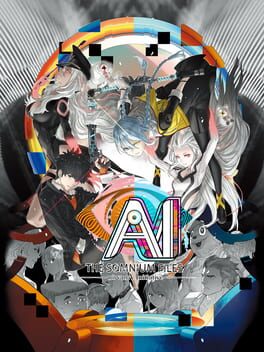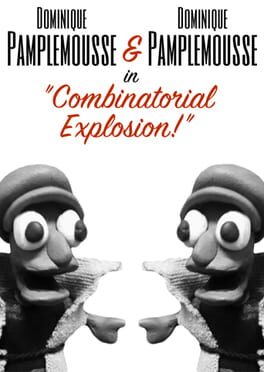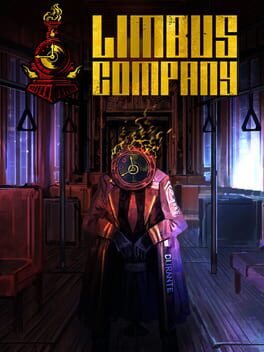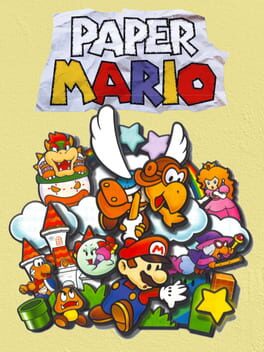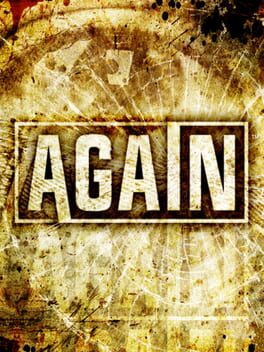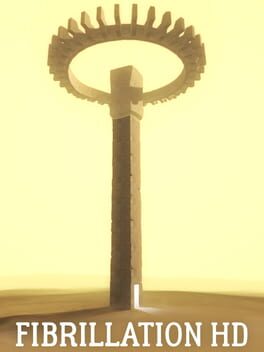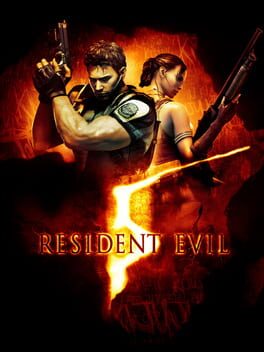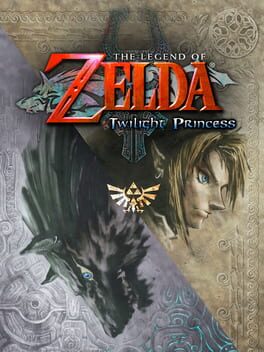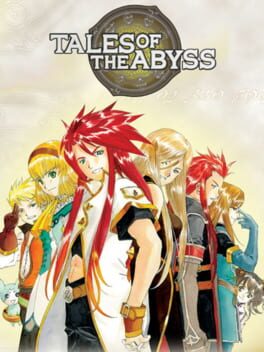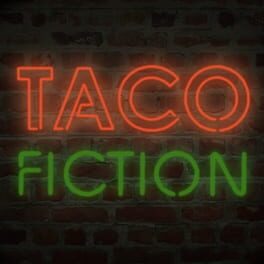bellwoods
44 Reviews liked by bellwoods
Telling Lies
2019
Bounced off this pretty fast after really enjoying Immortality. The controls are bafflingly lacking; simple functions like “skip to the beginning of the current clip” are entirely absent.
It was also distracting that the central contrivance of “one sided conversations” doesn’t make any sense. None of them (that I saw) are wearing headphones. Why didn’t the recording capture whatever they’re hearing and responding to?
It was also distracting that the central contrivance of “one sided conversations” doesn’t make any sense. None of them (that I saw) are wearing headphones. Why didn’t the recording capture whatever they’re hearing and responding to?
This game is a lot harder to say nice things about than its predecessor. The initial premise of there being two Dominiques after the multiple endings of the previous game is pretty funny, but from there, it quickly drops off into being a frustrating “meta” game that’s a chore to get through.
The gameplay is very stripped back. Instead of a point n click adventure, you just click text boxes to advance the dialogue forward. I really didn’t like this approach; it results in this hands off feeling, as if I might as well not be playing to begin with.
Presentation-wise, it’s mixed. The music is actually a big improvement on the first game, the singing still has that offkey quality to it but it’s a little easier on the ears and it’s pretty charming. Dominique singing in harmony with themself is actually a pretty cute and lovely detail. On the other hand, the visuals feel like a huge step back. Pretty much the only clay animation here (apart from a few Literal Soap Bars) is reused from the first game, and everything else is pretty much slapped together from what I’m guessing is clip art.
I could look past all of these issues if the game had good writing, but that’s probably its weakest aspect. The characters feel less like characters than vehicles for saying things, and it makes it hard to care about any of them. It’s a meta commentary that, in an attempt to break the walls between character, creator, and audience, only fortifies them by making the game’s world itself feel like little more than a tool.
I can’t even respect it as much as its predecessor for being so unabashed in how it presents itself because of its frustrating satire of other game genres. The shallow parody of big budget FPS games is one thing, but the jabs at Twine games feel needlessly rude and dismissive of others’ artistic expression. It honestly feels hypocritical in a game where one of the main themes is being oneself despite the rudeness and criticism of others you might face.
This game’s a bit of a chore to sit through and I wouldn’t recommend it.
The gameplay is very stripped back. Instead of a point n click adventure, you just click text boxes to advance the dialogue forward. I really didn’t like this approach; it results in this hands off feeling, as if I might as well not be playing to begin with.
Presentation-wise, it’s mixed. The music is actually a big improvement on the first game, the singing still has that offkey quality to it but it’s a little easier on the ears and it’s pretty charming. Dominique singing in harmony with themself is actually a pretty cute and lovely detail. On the other hand, the visuals feel like a huge step back. Pretty much the only clay animation here (apart from a few Literal Soap Bars) is reused from the first game, and everything else is pretty much slapped together from what I’m guessing is clip art.
I could look past all of these issues if the game had good writing, but that’s probably its weakest aspect. The characters feel less like characters than vehicles for saying things, and it makes it hard to care about any of them. It’s a meta commentary that, in an attempt to break the walls between character, creator, and audience, only fortifies them by making the game’s world itself feel like little more than a tool.
I can’t even respect it as much as its predecessor for being so unabashed in how it presents itself because of its frustrating satire of other game genres. The shallow parody of big budget FPS games is one thing, but the jabs at Twine games feel needlessly rude and dismissive of others’ artistic expression. It honestly feels hypocritical in a game where one of the main themes is being oneself despite the rudeness and criticism of others you might face.
This game’s a bit of a chore to sit through and I wouldn’t recommend it.
Limbus Company
2023
Hypnospace Outlaw
2019
The greatest Point-and-click I've ever played.
Hypnospace is a alternate history 90s internet simulator, that has you searching what is essentially people's geocity pages in order to find rule violations. I promise you that it is way more interesting then it sounds. A large part of the enjoyment of this game is just exploring the pages and learning about the users and their world. Only around 10% of the pages are actually required in order to beat the game, but the fun is searching for them while also enjoying the other 90%. It is so easy to go down rabbit holes, like when you discover that certain users have a long standing feud that goes as far as them making hate clubs about each other.
Hypnospace Outlaw is a charming and calming game that perfectly captures the essence of the now lost early internet. I love it so much and I really wish more people talked about it.
Hypnospace is a alternate history 90s internet simulator, that has you searching what is essentially people's geocity pages in order to find rule violations. I promise you that it is way more interesting then it sounds. A large part of the enjoyment of this game is just exploring the pages and learning about the users and their world. Only around 10% of the pages are actually required in order to beat the game, but the fun is searching for them while also enjoying the other 90%. It is so easy to go down rabbit holes, like when you discover that certain users have a long standing feud that goes as far as them making hate clubs about each other.
Hypnospace Outlaw is a charming and calming game that perfectly captures the essence of the now lost early internet. I love it so much and I really wish more people talked about it.
Paper Mario
2000
Back when Paper Mario was released on the N64 I remember it being my most hyped game for that console. I was very inexperienced with turn based RPGS at that time, having only played (and abandoning) Super Mario RPG, but after seeing this game's advertising I knew it was something I had to play. I rented it from the video store shortly after it was released.
Sadly, like was often the case when attempting games in this genre in my youth, I gave up on this game before seeing it through to completion. I can't quite recall exactly why I abandoned Paper Mario all those years ago, but I imagine I got stuck on a puzzle or found a boss too challenging, or maybe the rental period just ended.
Now that I have finally completed this game, I can see that younger me made it all but 3-5 hours from the finish line. While somewhat impressed by this, it detracted from my overall enjoyment of the game. Everything just felt a bit too familiar, like I had done it all before (because I had), despite there being 23 years between my two attempts. This didn't ruin my experience, but a fresh playthrough would have made things more enjoyable.
The plot in Paper Mario is this: Bowser has stolen the Star Rod from Star Haven and imprisoned the 7 Star Spirits that were guarding. The Star Rod has given him new powers which he uses to kidnap Princess Peach and wreak havoc on the Mushroom Kingdom. It is up to Mario to release the Star Spirits, defeat Bowser, save Peach, and return peace to the kingdom. The story, while nothing revolutionary, was still a lot of fun, and the writing and dialogue throughout were fantastic and filled with loads of charm and humour.
The graphics were great. Everything was super colourful and every location visited, and every character met were full of personality. The paper aesthetics worked very well with the gameplay, and I felt this style was a great choice by Nintendo. With that being said, and I know I am being nitpicky here, I felt the paper theme wasn't utilized to its fullest. Early on there were some good paper-related, such as Mario slowly floating off a cliff (because he is paper), but after the first chapter or two these jokes were pretty much non-existent. This was handled so much better in The Origami King, and yes, I know it isn't fair to compare the first game in a franchise to one created over 2 decades later, but I still felt it was worth mentioning here.
As is generally the case for RPGs, the gameplay is split between styles: the overworld exploration and the combat. The exploration elements in Paper Mario were a lot of fun and the player is taken to some truly memorable areas including a goomba village, a haunted house, and a puzzle-filled garden. As the journey progresses, Mario adds new companions to his party, with each having a unique ability that allows Mario to access previously unreachable areas. There were a good number of hidden areas to uncover, treasures and upgrades to find, and side quests to complete, but as the game wasn't too challenging, I felt most of these were pretty optional. I appreciated that the game had a warp-pipe system that allows the player to quickly return to previously visited areas, which was super useful for completing side-quests.
The combat in Paper Mario was turn based, but lacked the depth you see in most games in the genre. The player's party consists of just two characters; Mario, and one of the companions mentioned above. Mario can attack enemies with a jump attack, a hammer attack, or a special star ability, and his companions have their own set of abilities. As enemies were weak to a specific attacks or abilities, I found I had to swap between companions fairly frequently to ensure I was able to inflict the appropriate type of attack on the enemy.
Interestingly, Mario is the only character in the party with any sort of health bar, which greatly alleviated the need to manage an entire party's health, making this an easy recommendation for newcomers to the genre. Though companions do not have their own health bars they can still be attacked, which would prevent them from attacking for a few turns, but this happened very infrequently during my playthrough.
Mario's skill set starts out small, but as the story progresses you come across badges that provide the player with a variety of helpful upgrades. These upgrades include different types of attacks (throwing hammer, power jumps, etc.), additional health points, or the ability to increase hit points given or reduce damage received, and that is just naming a few. Equipping a badge requires a specific number of Badge Points (BP), which a player can choose to increase when levelling up (more on that soon). It was certainly a balancing act when deciding which badges I would equip, as I always felt I lacked BP, even after maxing out my BP points. I suppose that was the point of system though as it required me to balance the pros and cons of equipping just a few the game's most powerful badges or a larger number of less powerful ones.
All special attacks used in combat require Flower Points (FP), this game's "magic" system. Mario and his companions share the pool of FP, so some is strategy required to ensure that you don't run out of it in battle. FP is refilled by using items in or out of combat, by resting at a Toad House, or by levelling up.
Once a battle is finished the player is awarded star points, this game's XP. Whenever 100 points are collected Mario will level up, which gives the player the option of one of three upgrades: +5 to HP, +5 to FP, or +3 to BP. On paper this is fine, but I felt that it took far longer than it should to level up, especially since most enemies only gave 1-2 star points, and bosses generally only gave 10-30 star points. I felt that the reward for levelling up was underwhelming, too. In most RPGs you get some increase to each of your stats when levelling up, so it rarely felt satisfying when getting to a new level here. Honestly, the best part of levelling up was that it meant my HP and FP got topped back up to full.
I really enjoyed my playthrough of Paper Mario and it feels good to finally see the story through to its conclusion after all these years. From the very get go the game's writing was charming and funny, though more paper-related jokes would have been appreciated. The story, while not revolutionary, was still thoroughly entertaining. The world was fun to explore, with good number of side quests to complete and hidden items to find. Combat, while beginner friendly, had enough depth to keep things entertaining. I do wish the game had felt a bit less familiar, but it was certainly worthwhile seeing this story though to its conclusion. I am looking forward to playing through Paper Mario: The Thousand Year Door (another Mario RPG I abandoned partway through...) later this year!
Sadly, like was often the case when attempting games in this genre in my youth, I gave up on this game before seeing it through to completion. I can't quite recall exactly why I abandoned Paper Mario all those years ago, but I imagine I got stuck on a puzzle or found a boss too challenging, or maybe the rental period just ended.
Now that I have finally completed this game, I can see that younger me made it all but 3-5 hours from the finish line. While somewhat impressed by this, it detracted from my overall enjoyment of the game. Everything just felt a bit too familiar, like I had done it all before (because I had), despite there being 23 years between my two attempts. This didn't ruin my experience, but a fresh playthrough would have made things more enjoyable.
The plot in Paper Mario is this: Bowser has stolen the Star Rod from Star Haven and imprisoned the 7 Star Spirits that were guarding. The Star Rod has given him new powers which he uses to kidnap Princess Peach and wreak havoc on the Mushroom Kingdom. It is up to Mario to release the Star Spirits, defeat Bowser, save Peach, and return peace to the kingdom. The story, while nothing revolutionary, was still a lot of fun, and the writing and dialogue throughout were fantastic and filled with loads of charm and humour.
The graphics were great. Everything was super colourful and every location visited, and every character met were full of personality. The paper aesthetics worked very well with the gameplay, and I felt this style was a great choice by Nintendo. With that being said, and I know I am being nitpicky here, I felt the paper theme wasn't utilized to its fullest. Early on there were some good paper-related, such as Mario slowly floating off a cliff (because he is paper), but after the first chapter or two these jokes were pretty much non-existent. This was handled so much better in The Origami King, and yes, I know it isn't fair to compare the first game in a franchise to one created over 2 decades later, but I still felt it was worth mentioning here.
As is generally the case for RPGs, the gameplay is split between styles: the overworld exploration and the combat. The exploration elements in Paper Mario were a lot of fun and the player is taken to some truly memorable areas including a goomba village, a haunted house, and a puzzle-filled garden. As the journey progresses, Mario adds new companions to his party, with each having a unique ability that allows Mario to access previously unreachable areas. There were a good number of hidden areas to uncover, treasures and upgrades to find, and side quests to complete, but as the game wasn't too challenging, I felt most of these were pretty optional. I appreciated that the game had a warp-pipe system that allows the player to quickly return to previously visited areas, which was super useful for completing side-quests.
The combat in Paper Mario was turn based, but lacked the depth you see in most games in the genre. The player's party consists of just two characters; Mario, and one of the companions mentioned above. Mario can attack enemies with a jump attack, a hammer attack, or a special star ability, and his companions have their own set of abilities. As enemies were weak to a specific attacks or abilities, I found I had to swap between companions fairly frequently to ensure I was able to inflict the appropriate type of attack on the enemy.
Interestingly, Mario is the only character in the party with any sort of health bar, which greatly alleviated the need to manage an entire party's health, making this an easy recommendation for newcomers to the genre. Though companions do not have their own health bars they can still be attacked, which would prevent them from attacking for a few turns, but this happened very infrequently during my playthrough.
Mario's skill set starts out small, but as the story progresses you come across badges that provide the player with a variety of helpful upgrades. These upgrades include different types of attacks (throwing hammer, power jumps, etc.), additional health points, or the ability to increase hit points given or reduce damage received, and that is just naming a few. Equipping a badge requires a specific number of Badge Points (BP), which a player can choose to increase when levelling up (more on that soon). It was certainly a balancing act when deciding which badges I would equip, as I always felt I lacked BP, even after maxing out my BP points. I suppose that was the point of system though as it required me to balance the pros and cons of equipping just a few the game's most powerful badges or a larger number of less powerful ones.
All special attacks used in combat require Flower Points (FP), this game's "magic" system. Mario and his companions share the pool of FP, so some is strategy required to ensure that you don't run out of it in battle. FP is refilled by using items in or out of combat, by resting at a Toad House, or by levelling up.
Once a battle is finished the player is awarded star points, this game's XP. Whenever 100 points are collected Mario will level up, which gives the player the option of one of three upgrades: +5 to HP, +5 to FP, or +3 to BP. On paper this is fine, but I felt that it took far longer than it should to level up, especially since most enemies only gave 1-2 star points, and bosses generally only gave 10-30 star points. I felt that the reward for levelling up was underwhelming, too. In most RPGs you get some increase to each of your stats when levelling up, so it rarely felt satisfying when getting to a new level here. Honestly, the best part of levelling up was that it meant my HP and FP got topped back up to full.
I really enjoyed my playthrough of Paper Mario and it feels good to finally see the story through to its conclusion after all these years. From the very get go the game's writing was charming and funny, though more paper-related jokes would have been appreciated. The story, while not revolutionary, was still thoroughly entertaining. The world was fun to explore, with good number of side quests to complete and hidden items to find. Combat, while beginner friendly, had enough depth to keep things entertaining. I do wish the game had felt a bit less familiar, but it was certainly worthwhile seeing this story though to its conclusion. I am looking forward to playing through Paper Mario: The Thousand Year Door (another Mario RPG I abandoned partway through...) later this year!
Aviary Attorney
2015
very cute, the drawings are charming and the humor mostly hits. the "timed" structured can be a bit annoying though, it's specially annoying when you decide to visit a place, there's nothing/nobody there and then a whole day passes, or when you miss a very important proof because of bad timing
i understand the time mechanic can lead to a lot of frustration, it frustrated me, but the game does deal with your failures, and it's not just an automatic game over. i think if it's worked on with a bit more time and budget it's a template for a very yood system, and something ace attorney could even implement to combat the staleness i feel the franchise is going through
i understand the time mechanic can lead to a lot of frustration, it frustrated me, but the game does deal with your failures, and it's not just an automatic game over. i think if it's worked on with a bit more time and budget it's a template for a very yood system, and something ace attorney could even implement to combat the staleness i feel the franchise is going through
Again
2009
Again is a generic crime story with generic (and sluggish) adventure gameplay, so while it's certainly playable and able to be completed, it's most likely not going to stick with you. It's also not an engaging mystery; it doesn't really give you the tools to solve it as you go, leaving you to wait for someone else (or J's visions) to tell you most of the answers.
Considering it's completely devoid of the interesting character writing and physical location-personality of Cing's other works Another Code and Hotel Dusk, I sincerely hope anyone playing this game plays this after those. Then you'll just know what this one is missing, as opposed to losing faith in Cing's ability to portray them whatsoever.
The transition screens with J's outline walking are about as stylish as it ever gets. So those are cute, at least.
Considering it's completely devoid of the interesting character writing and physical location-personality of Cing's other works Another Code and Hotel Dusk, I sincerely hope anyone playing this game plays this after those. Then you'll just know what this one is missing, as opposed to losing faith in Cing's ability to portray them whatsoever.
The transition screens with J's outline walking are about as stylish as it ever gets. So those are cute, at least.
Babbdi
2022
Fibrillation HD
2017
Resident Evil 5
2009
The worst version of Twilight Princess, which isn't one of my favorite Zeldas to begin with. The forced waggle has aged like milk. There's no reason why they couldn't have supported the GameCube controller.
Mirroring the game world was a nonsensical decision and there's no justification for it. The map structure is a big callback to Ocarina of Time and the mirroring completely kills it.
If they had put more effort in, they could've implemented a "GameCube mode" that addresses both of these issues.
Mirroring the game world was a nonsensical decision and there's no justification for it. The map structure is a big callback to Ocarina of Time and the mirroring completely kills it.
If they had put more effort in, they could've implemented a "GameCube mode" that addresses both of these issues.
